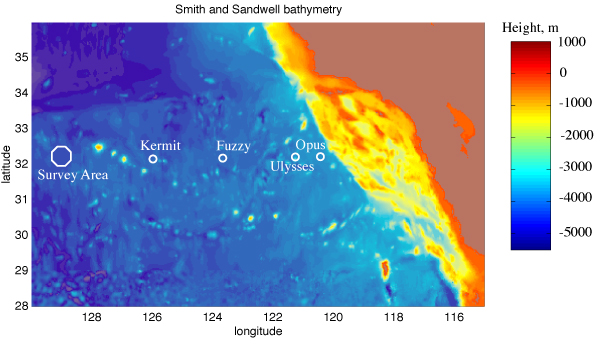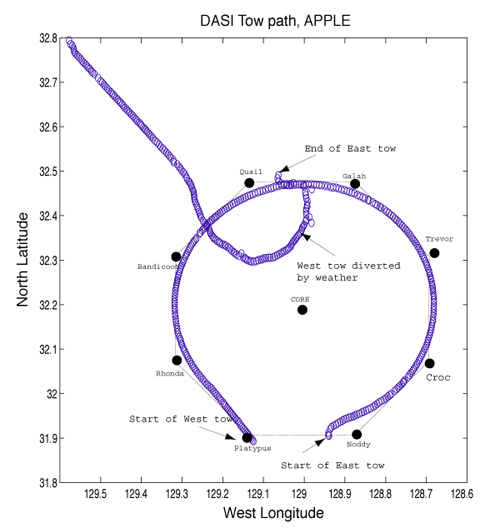Research | APPLE
APPLE: Anisotropy and Physics of the Pacific Lithosphere
Experiment
Personnel:
Steven Constable, James
Behrens, Kerry Key ,
Christine Chesley
This NSF-funded research project aims to study
electrical anisotropy in the oceanic crust and
mantle using controlled source EM and magnetotelluric
soundings. It is
an international collaboration between the Marine
EM Laboratory at Scripps Institution of Oceanography
and Lucy MacGregor and Martin Sinha of Southampton
Oceanography Centre, Mark Everett of Texas A&M University,
and Antony White and Graham Heinson of Flinders
and Adelaide Universities. The first leg of the
experiment was carried out on the R.V. Thomas Thompson
Feb 22nd to March 12 2001. The recovery leg on
the R/V New Horizon follwed in August 2001.
The CSEM data from this experiment was studied
by James Behrens for his Ph.D. thesis.
Downloadables:
James
Behren's PhD Defense Presentation on:
The Detection of
Electrical Anisotropy in 35 Ma Pacific Lithosphere:
Results from a Marine Controlled-Source Electromagnetic
Survey and Implications for Hydration of the
Upper Mantle (Quicktime 7 Format, 13.9 MB)
James Behrens
The
Detection of Electrical Anisotropy in 35 Ma Pacific Lithosphere:
Results from a Marine Controlled-Source Electromagnetic Survey
and Implications for Hydration of the Upper Mantle, Ph. D. Thesis, University of California,
San Diego, 2005. PDF (29.7 MB)
Cruise Report, PDF (2.40 MB)
APPLE Data Page
 Location of the controlled-source EM survey area, about 1000
km west of San Diego, California. Four long period
MT receivers operated by Graham Heinson (Adelaide
University) were deployed on a transect to the
mainland in order to study the EM coast effect. Location of the controlled-source EM survey area, about 1000
km west of San Diego, California. Four long period
MT receivers operated by Graham Heinson (Adelaide
University) were deployed on a transect to the
mainland in order to study the EM coast effect.

The survey area. Black dots show the location of EM receivers.
The blue trail shows the path of the deep-towed EM transmitter,
which was used to broadcast energy down through the lithosphere
and back up to the receivers. The core location consisted
of 4 LEM receivers, which record electric fields on 100 m
long dipole antennas.

Initial evidence for anisotropy: Magnitudes of the major (Pmax)
and minor (Pmin) axes of the elliptically polarized horizontal
electric field for CSEM data (left) and model response (right)
as a function of receiver–transmitter bearing on the
large circular tow. The model is a uniaxially anisotropic upper
mantle underlying an isotropic crust, with vertical sheets
of increased electrical conductivity aligned N–S, parallel
to the paleo-spreading center. The two resistivities in the
anisotropic layer are 10,000 Ohm.m and 100,000 Ohm.m. |